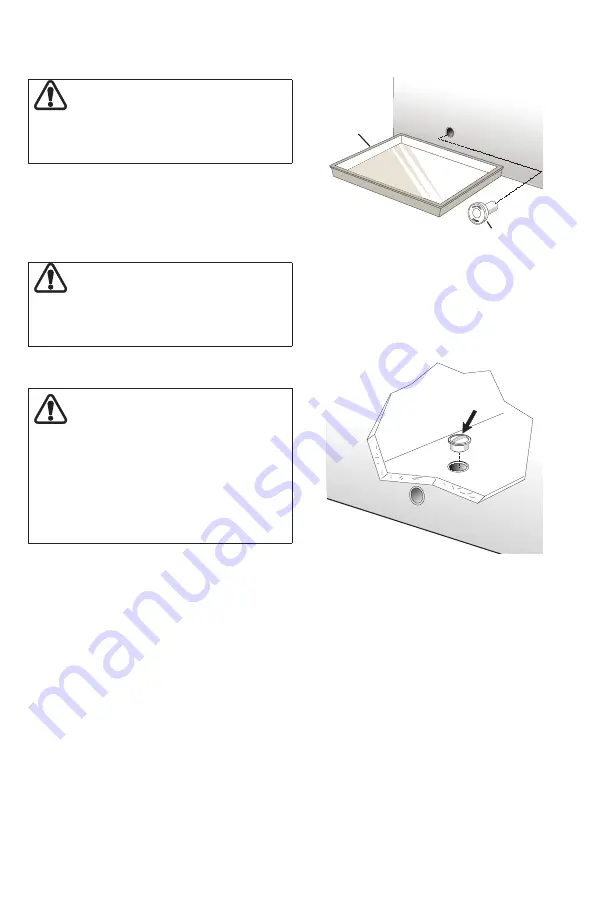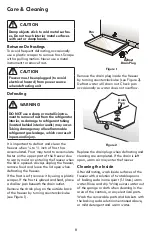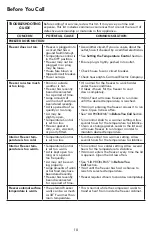
8
CAUTION
Damp objects stick to cold metal surfac-
es. Do not touch interior metal surfaces
with wet or damp hands.
Care & Cleaning
Between Defrostings
To avoid frequent defrosting, occasionally
use a plastic scraper to remove frost. Scrape
with a pulling motion. Never use a metal
instrument to remove frost.
CAUTION
Freezer must be unplugged (to avoid
electrical hazard) from power source
when defrosting unit.
Defrosting
WARNING
DO NOT use a sharp or metallic instru-
ment to remove frost from the refrigerator
interior, as damage to refrigerant tubing
(located behind interior walls) may occur.
Tubing damage may allow flammable
refrigerant gas leakage, which can result
in personal injury.
It is important to defrost and clean the
freezer when ¼ to ½ inch of frost has
accumulated. Frost may tend to accumulate
faster on the upper part of the freezer due
to warm, moist air entering the freezer when
the lid is opened. Always unplug the freezer,
remove food and leave the lid open when
defrosting the freezer.
If the frost is soft, remove it by using a plastic
scraper. If the frost is glazed and hard, place
a shallow pan beneath the drain outlet.
Figure 2
Drain
Plug
Defrost
Drain Plug
Pan
Figure 1
Cleaning the Inside
After defrosting, wash inside surfaces of the
freezer with a solution of two tablespoons
of baking soda in one quart (1.1 liters) warm
water. Rinse and dry. Wring excess water out
of the sponge or cloth when cleaning in the
area of the controls, or any electrical parts.
Wash the removable parts and baskets with
the baking soda solution mentioned above,
or mild detergent and warm water.
Remove the drain plug on the outside back
of the freezer by turning counterclockwise
(see Figure 1).
Remove the drain plug inside the freezer
by turning counterclockwise (see Figure 2).
Defrost water will drain out. Check pan
occasionally so water does not overflow.
Replace the drain plugs when defrosting and
cleaning are completed. If the drain is left
open, warm air may enter the freezer.






























